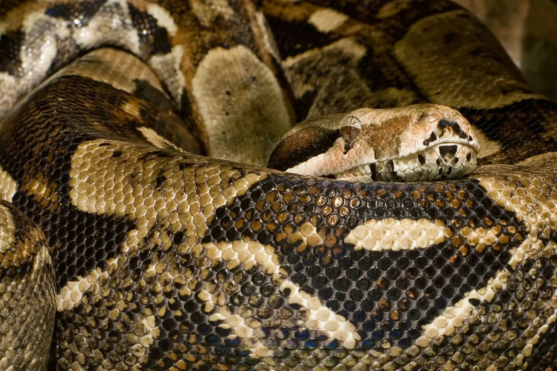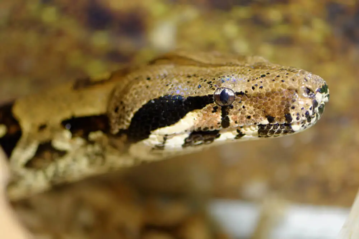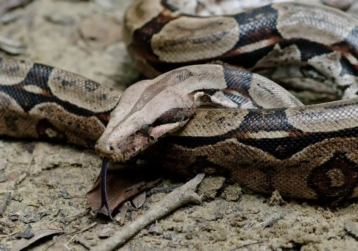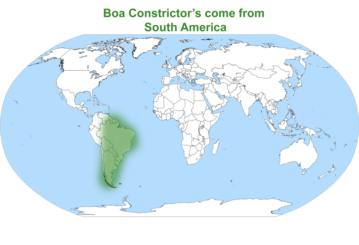Boa Constrictors
Reptilarium Animals
Boa Constrictors
Conservation status (Least Concern)


Boa constrictor, also called the red-tailed boa or the common boa, is a species of large, non-venomous, heavy-bodied snake that is frequently kept and bred in captivity. The boa constrictor is a member of the family Boidae, found in tropical South America, as well as some islands in the Caribbean. A staple of private collections and public displays, its colour pattern is highly variable yet distinctive. Four subspecies are currently recognised. This article focuses on the species Boa constrictor as a whole, and on the nominate subspecies B. c. constrictor.


The Boa constrictor is a species of large, non-venomous, heavy-bodied snake that is frequently kept and bred in captivity. The colouring of Boa constrictors can vary greatly depending on the locality. However, they are generally brown, grey, or cream base colour, patterned with brown or reddish-brown "saddles" that become more pronounced towards the tail. Their colouring works as very effective camouflage in the jungles and forests of their natural range. Female Boa constrictors are generally larger in both length and girth than males.
Boa constrictors are be found through South America (Colombia, Ecuador, Peru, Venezuela, Trinidad and Tobago, Guyana, Suriname, French Guiana, Brazil, Bolivia, Uruguay, and Argentina), and in the Lesser Antilles (Dominica and St. Lucia), and many other islands along the coasts of South America. These snakes live in a wide variety of environmental conditions, from tropical rain-forests to arid semi-desert country. However, they prefer to live in rain-forest due to the humidity and temperature, natural cover from predators, and a vast amount of potential prey. They are commonly found in or along rivers and streams.


Boa constrictors are carnivorous creatures. Their diet includes a wide variety of small to medium-sized mammals and birds. They mainly feed on rodents, but may also hunt larger lizards and mammals as big as ocelots. Young boa constrictors eat small mice, birds, bats, lizards, and amphibians.
Boa constrictors generally live on their own and do not interact with any other snakes unless they want to mate. They are nocturnal, but they may bask during the day when night-time temperatures are too low. As semi-arboreal snakes, young Boa constrictors may climb into trees and shrubs to forage; however, they become mostly terrestrial as they become older and heavier. They are very capable swimmers. Boa constrictors often occupy the burrows of medium-sized mammals, where they can hide from potential predators. These snakes strike when they perceive a threat. Their bite can be painful, especially from large snakes, but is rarely dangerous to humans. Like all snakes, Boa constrictors in a shed cycle are more unpredictable, because of the substance that lubricates between the old skin and the new one. It makes their eyes appear milky, blue, or opaque so that the snake cannot see very well, causing it to be more defensive than it might be otherwise. Boa constrictors are ambush predators, so often lie in wait for an appropriate prey to come along, when they attack. However, they do hunt, particularly in regions with a low concentration of suitable prey, and hunting generally occurs at night. The boa first strikes at the prey, grabbing it with its teeth; it then proceeds to constrict the prey until death before consuming it whole.

